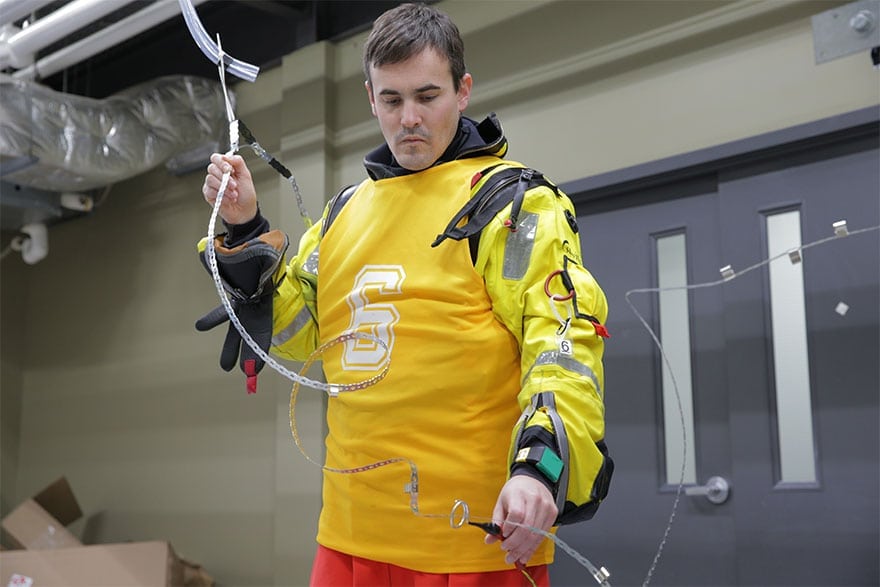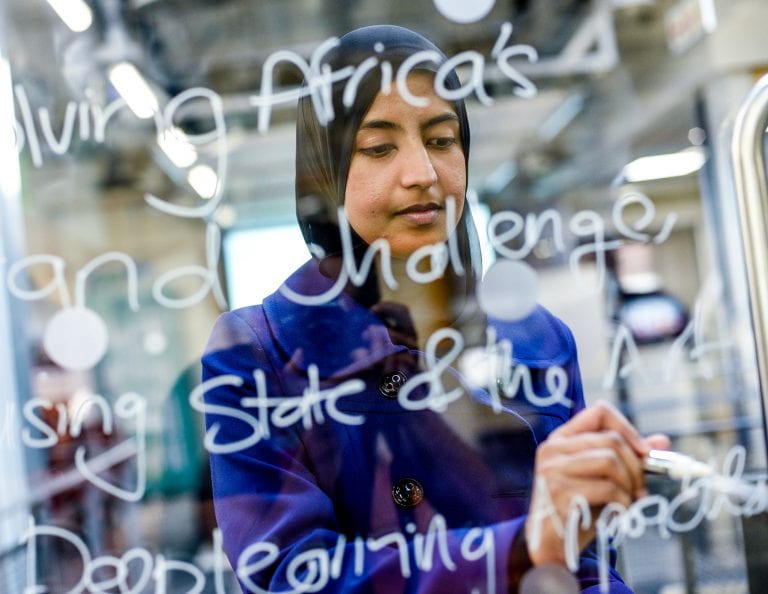The space program can provide valuable insights to engineers working on global health challenges.
I am a professional emailer. So my day job hasn’t typically included jumping off 10 meter platforms into wave pools, or being flipped over in a sinking helicopter simulator in the dark, or fighting blinding fires and freezing floods. Or, perhaps even harder, sewing fabric cuffs or moving marbles from one table to another with Dixie cups and rubber bands. But at least I nailed the Etch-a-Sketch challenge.
“The International Space Station can be a unique platform for addressing chronic challenges on Earth.”
Throughout last spring, I was a candidate for the Canadian Astronaut Selection, which meant I was challenged and tested from nearly 4,000 applicants to a final public 17 finalists. Eventually, the Canadian Space Agency got wise to me, and today my new friends Josh and Jenni are training in Houston as Canada’s latest astronauts. When I applied for the astronaut job, it wasn’t to walk away from the challenges inherent in global development, but to amplify the impact of engineering.
The International Space Station can be a unique platform for addressing chronic challenges on Earth. Many astronauts return home deeply transformed by a sense of our interconnectedness with the rest of humanity and with our fragile planet. Former astronauts Ron Garan, Nicole Stott, Leland Melvin, and Anousheh Ansari noted their shared experiences of seeing the Earth from orbit at the recent launch of the Constellation Foundation, with a vision that, “Profound collaboration is the key to making what seems impossible possible.”
By engaging research partners in developing countries, for instance, space agencies can ground-truth Earth observation data, then leverage their orbiting assets toward environmental impact monitoring and response. More ambitiously, through the development of sustainable life support systems that can operate for long duration space flights, engineers can exchange in a multi-direction technology transfer with others working to address similar challenges here on Earth. I was not the only Canadian astronaut candidate thinking about embracing high-tech aerospace tools to tackle critical planetary health challenges. Another candidate, Sara Spangelo, founded a small-satellite company, Swarm Technologies, which will soon reach the most remote places on Earth with affordable connectivity.
“Through the development of sustainable life-support systems that can operate for long-duration space flights, engineers can exchange in a multi-direction technology transfer with others working to address similar challenges here on Earth.”
Our team at Portland State is working with Sara’s to provide global, cost effective environmental monitoring of critical resources. Today, we are remotely monitoring the water supplies for over a million people in Ethiopia and Kenya. With Sara’s help, we’ll be able to monitor over 5 million people’s water in the next year, linking this critical data to water service providers and regional water resource management authorities.
Working with the USAID, NASA’s SERVIR program, and the Kenya based Regional Centre for Mapping of Resources for Development, a consortium of 20 African countries, we are also using our sensor data to ground truth satellite-based remote sensing data and extend our impact into regional water management. The aerospace and global health worlds continue to collide. The Planetary Health Alliance, a convening concept coined by the Rockefeller Foundation and The Lancet medical journal, connects climate change science to the practical impacts on people. The warming planet, declining biodiversity, shortages of arable land and freshwater are impacting all of us—though some are feeling these impacts more quickly and acutely.
“By engaging research partners in developing countries, space agencies can ground-truth Earth observation data, then leverage their orbiting assets toward environmental impact monitoring and response.”
Where our teams operate in the African Great Rift Valley, which extends from Tanzania through Ethiopia, drought has been an historic way of life. But now, it’s persistent and critical. While some Americans still scoff at climate change, Ethiopians and Kenyans live with the early impacts every day. Space-based monitoring of the changing climate and its impact can help decision-makers act to ameliorate some of the worst effects on people taking the brunt of global warming. None of this is replaces the work being done on the ground, but a different viewpoint is always helpful—even when the perspective is from Earth’s orbit.
This article first appeared in Mechanical Engineering magazine Vol. 140, No. 2, February 2018. Copyright ASME 2018.



i watched the whole process of selection ,i saw you there sir,i wish i gain that much as you ,and i am already engage in hot climate problems solutions ,